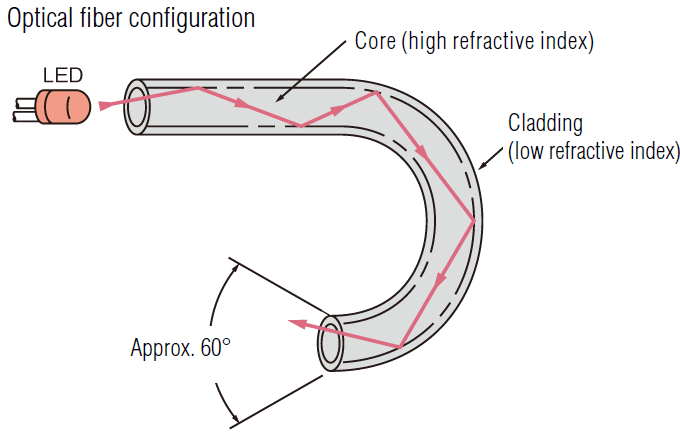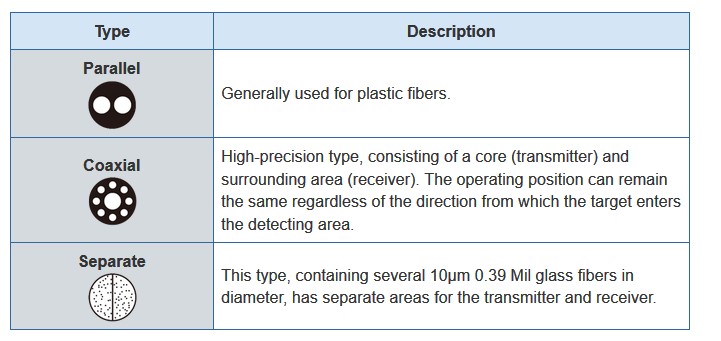- 5mm U-shaped photoelectric sensor
- New Metallic label capacitive Fork Label sensor S-4200
- Regarding label sensors
- Ultrasonic Sensor Theory and application
- Regarding Fiber Optical Sensor
- What is a Photoelectric Sensor
- Sticker labeling machine for bottle beer application
- Metallic label sensors s-4200 series
- Operating principles for capacitive sensor
- Operating principles for photoelectric sensors
- E-mail: samuel#sunland-auto.com
- Please change # to @
- WeChat: s-sensors
- Skype: +86 18688621237
The fiber optic sensor has an optical fiber connected to a light source to allow for detection in tight spaces or where a small profile is beneficial.
The optical fiber consists of the core and the cladding, which have different refractive indexes. The light beam travels through the core by repeatedly bouncing off the wall of the cladding. The light beam, having passed through the fiber without any loss in light quantity, is dispersed at an angle of approximately 60° and emitted to the target.

Plastic type
The core of the plastic-fiber consists of one or more acrylic-resin fibers 0.25 to 1 mm 0.01" to 0.04" in diameter, encased in a polyethylene sheath. Plastic fibers are light, cost-effective, and flexible which is why they are the most common type of fiber sensor.
Glass type
The glass-fiber consists of 10 to 100 μm 0.39 to 3.94 Mil diameter glass fibers encased in stainless steel tubing. This allows it to be used at high operating temperatures (350°C 662°F max.).
The optical fiber sensors are divided into two categories: thrubeam and reflective. The thrubeam type comprises a transmitter and a receiver. The reflective type, which is a single unit, is available in 3 types: parallel, coaxial, and separate. The 3 are based on the shape of the crosssection of the optical fiber.

- Home - About us - New products - News - Download - FAQ - Feedback - Contact us - Sitemap
- All rights received by s-sensors
 |
 |
 |
| Add Wechat as contact | Add WhatsAPP as contact | Add Skype as contact |





 2019-8-28
2019-8-28